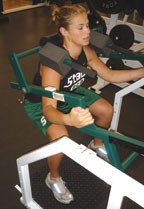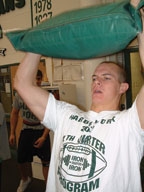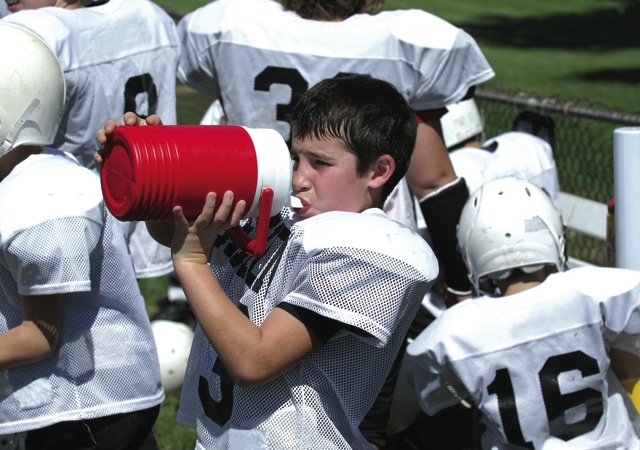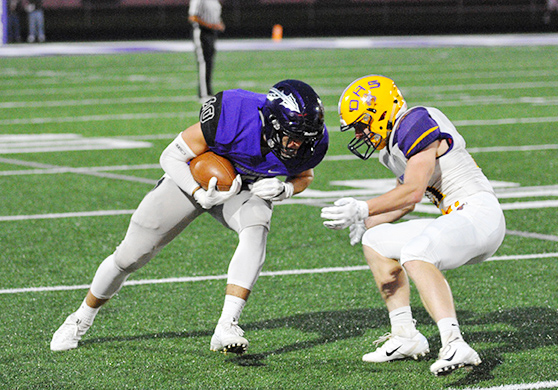Ken Mannie’s mailbag: Answering questions from coaches
It’s time once again to reach into the mailbag and scan my email for some of the most frequently asked questions I’ve received from coaches.
There were a lot of great questions that require some lengthy discussion, and I’ve picked a few that had recurring themes over that period.
Reader questions
Coaches hear and read so much in today’s popular press and other mediums about “functional” or “holistic” training. What does it all mean and how significant is it in structuring a program?
The definitions and applications of these terms can vary depending upon the source. As hard as coaches might try to keep up with all of the newer, trendy methodologies and attempt to translate the wealth of buzz terms that continually swarm around them, they no sooner have one figured out when three more rise to the surface.
One common thread in the functional arena is the emphasis on multi-plane, multi-joint movements. Basically, these are categorized by the anatomical planes engaged by the activities, which include the following:
- Sagittal Plane: This designation divides the body into right and left segments. Actually, the term sagittal is defined as the “flight of an arrow” and hypothetically refers to the way the body would be split by an arrow from front to back.
- Frontal Plane (also called the Coronal Plane): This refers to the vertical divide from front (anterior) to back (posterior) segments.
- Transverse Plane: This anatomical division runs horizontally and splits the body into upper (superior) and lower (inferior) segments.
If you install movements that involve pressing and pulling in the vertical, incline, horizontal, and decline planes — as well as rotational activities for both the upper and lower body — you are most assuredly addressing and engaging the neuromuscular system throughout this multi-planar complex.
There are also myriad writings and discussions — replete with the proliferation of the accompanying exercise equipment — on the “core.” This is an area that, in our definition, envelops an area extending from the abdominal and lumbar (low back) segments to the top of thigh anteriorly (i.e., high quadriceps and hip flexor region) and the top of the hamstrings posteriorly. You’ve probably been working these segments in your basic scripts without much fanfare as it is, but it’s a good idea to review your workouts to be sure they are covered.
I’m a high school football coach who incorporates some of the Olympic-style lifts as our core exercises. However, some our players, primarily the linemen, are not gaining good weight at the rate we would like to see. Do you have any suggestions for accelerating this process?
First off, the Olympic-style lifts are multi-joint, competitive movements requiring a great deal of practice and skill acquisition. Due to their complexity, I would merely recommend that you have a complete understanding of their techniques, execution, progression intervals and other troubleshooting issues associated with them.
Regarding the weight gain issue, here are a few perspectives and suggestions:
• Many high school-aged kids have difficulty gaining a great deal of muscle weight at a rapid rate and/or to a high level due to their genetic make-up and their own built-in defense mechanisms. It could be that a particular individual’s hormonal system has not yet kicked into high gear and he needs a little more time. Or, it may be a body type issue (i.e., fewer mesomorhphic characteristics and more from the endomorphic or ectomorphic classifications) that are presenting a temporary snag in growth. Whether it is either or both of these normal situations, you might simply have to let nature play it out.
• Check their nutritional habits and adherence to a sound, individualized approach to healthy calorie intake. If possible, have your more prominent “hardgainers” arrange consults with a Registered Dietician (RD), preferably one who has expertise in sports nutrition.
• Periodically, you might consider incorporating some lifting movements that create and maintain continuous tension within the working musculature for approximately 45-60 seconds. All-out efforts (i.e., those taken to muscular fatigue) would be beneficial on any movements that safely accommodate this style of training. You may find that this addition in itself provides the impetus their bodies need.
Speed and quickness training are always hot topics. We know that there are some definite inherited qualities which are important for elite speed, but can speed really be improved in the average athlete and, if so, how?
If we are talking about cutting some ticks from the clock in timed sprints such as the 40-yard dash, the answer is an unequivocal “yes!” Most of the time, you can achieve this by merely improving the athlete’s stance and start techniques in conjunction with both his/her upper and lower body running mechanics.
Genetic predisposition aside, there are also a host of cognitive, sensory, neuromuscular, and morphological factors (again, body type/composition) that can contribute to both speed and quickness improvements. Assuming that the athlete’s neuromuscular efficiency — or the speed and accuracy with which neural information is sent and received along the brain-to-muscle pathway — is hitting on all cylinders, significant enhancements are possible.
Other than technique and mechanics, the cognitive aspects of speed and quickness improvement are crucial, though they tend to get lost or ignored. Our Head Football Coach, Mark Dantonio, is always telling our players, “To play fast, you have to know what you’re doing.”
That point is often reiterated by the many NFL scouts I talk to on a year-round basis. They often refer to players across the nation who don’t necessarily have great testing measureables (i.e., 40 yd. dash, vertical jump, agility runs, etc.) but “play fast” because they know what they’re doing, have a revved-up “motor,” in addition to demonstrating a great deal of mental and physical toughness.
Conversely, the scouts also speak of players who have great testing measureables, but look slow on film because they hesitate or simply cannot decipher the multiple visual and pressure cues bombarding their response mechanisms in rapid fire sequence. In essence, they are akin to thoroughbreds that are stuck in the mud because they cannot process the cognitive aspects of the game and react to them.
And, in some cases, all of this is compounded with a lack of hustle and/or toughness.
The take home point is athletes must study the game as much as they physically prepare to play it. As coach Dantonio always stresses, a player who is confident with his responsibilities, knowledgeable of the proper techniques, and is able to react with decisiveness to the designated keys and cues, will play far above his spread sheet testing results.
Of course, the player has to bring that hustle and toughness to the table, as well.
Ken Mannie is the head strength/conditioning coach at Michigan State University.





